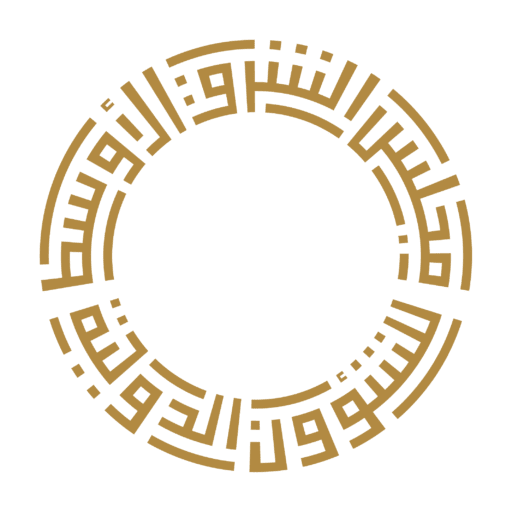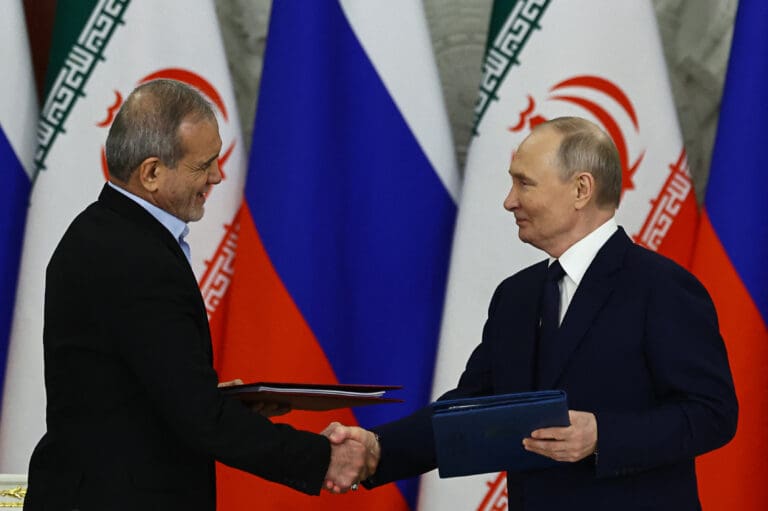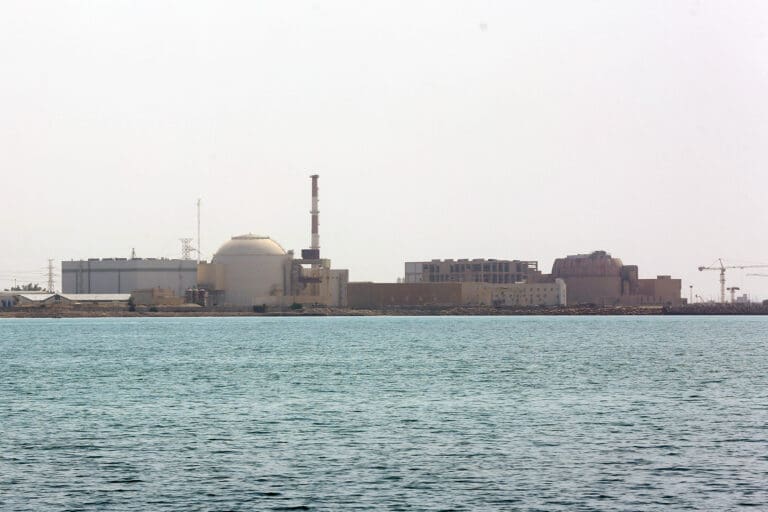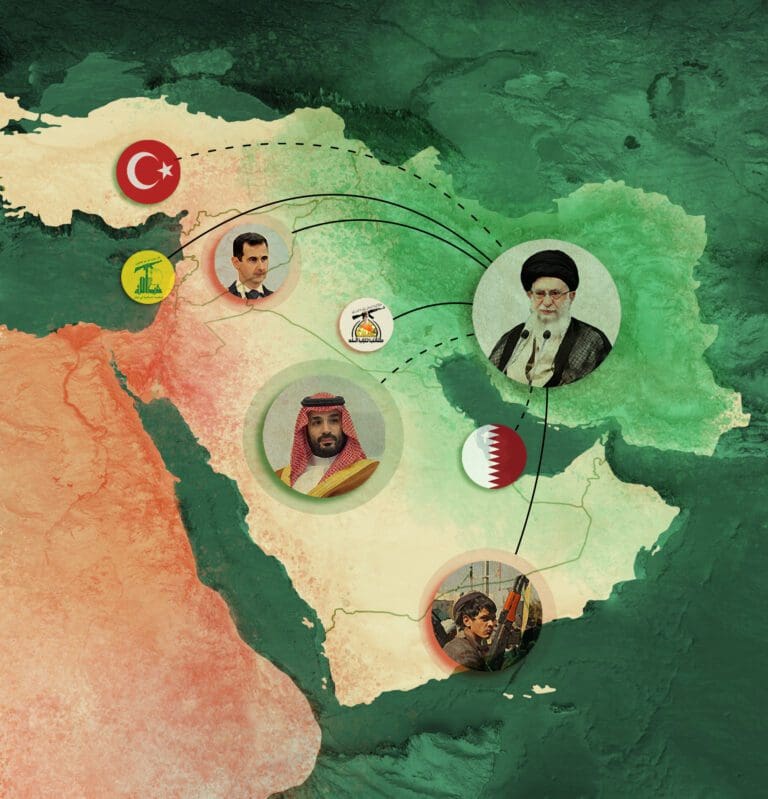
Iran’s Evolving Foreign Policy Structure:
Implications on Foreign Relations
Issue Brief, June 2024
Key Takeaways
Strategic Shift Towards Centralization, Militarization, and Authoritarianism: Under President Ebrahim Raisi, Iran saw a significant transformation in its foreign policy, highlighting increased centralization, anti-Westernism, militarization, and a stronger authoritarian grip within its ruling elite. These trends are expected to continue shaping Iran’s foreign policy after Raisi’s death.
Elevation of Non-Diplomatic Entities in Foreign Policy: The diminishing role of the Ministry of Foreign Affairs and the enhanced influence of the Supreme National Security Council (SNSC) and the Islamic Revolutionary Guard Corps (IRGC) reflect a shift from traditional diplomatic channels to more militarized and security-driven strategies.
Reorientation Towards Eastern Partnerships: Iran’s foreign policy is increasingly geared towards strengthening ties with Eastern powers, notably Russia and China, moving away from diplomatic engagement with the West to a strategy of ideological defiance and strategic pragmatism.
Potential for Regional Cooperation Amidst Confrontational Posture: While Iran’s foreign policy shifts offer opportunities for enhanced regional cooperation, particularly with Arab neighbors, they also pose risks of diplomatic isolation and strain Iran’s international relations due to its confrontational and insular approach.
Introduction
Since the beginning of Ebrahim Raisi’s presidency in August 2021, until his sudden death in May 2024, Iran’s foreign policy significantly shifted, impacting Tehran’s relations with both regional and global powers. Diminishing hopes for reviving the 2015 nuclear deal, The Joint Comprehensive Plan of Action (JCPOA), and rising tensions with the United States have pushed Iran to strengthen ties with Russia and China to offset Western estrangement and economic pressures from U.S. sanctions. Meanwhile, improved relations with Saudi Arabia and other Arab neighbors, driven by continued dialogue and confidence-building measures, have been bolstered by a unified stance on the war on Gaza, presenting opportunities for regional cooperation.
Analyses of Iranian foreign policy often focus on regional and international dynamics but tend to overlook the internal evolution of Iran’s foreign policymaking structure. Key internal developments, such as increased centralization of power, the securitization of the political system, and the increased authoritarian control of the ruling elite, profoundly shape Iran’s foreign policy and international relations. Moreover, there’s a lack of emphasis on the institutional and structural changes within the bodies that formulate foreign policy. Understanding these institutional shifts is vital for a comprehensive view of how they affect Iran’s foreign policy. These underlying trends can also explain why, despite the death of Raisi and his foreign minister, Hossein Amirabdollahian, the country’s foreign policy is not expected to undergo any significant changes.
This issue brief aims to explore the transformation of Iran’s foreign policy decision-making process and structure in the past three years, highlighting the impact of growing power centralization, anti-Westernism, militarization, and authoritarianism in Iran. The main argument is that there is a direct correlation between Iran’s internal political shifts and its evolving foreign policy. Key to this analysis is the accelerated shift from formal constitutional mechanisms to informal processes. There has also been an increase in the autonomy of parallel state institutions, which has eroded the role of the Ministry of Foreign Affairs (MFA). The analysis will also discuss the consequences of these shifts on Iran’s international relations and regional ties.
Foreign Policymaking in the Islamic Republic: Formal Structures Versus Informal Procedures
Iran’s constitution defines the key legal bodies involved in foreign policymaking, including the Supreme Leader, the President, the Cabinet, the Parliament, and the Supreme National Security Council (SNSC). Yet, the actual foreign policymaking process in Iran is often opaque and informal, marked by ambiguity in the operations of its agents and structures. This complexity stems from institutional developments that exceed formal constitutional limits and the difficulty in obtaining reliable insider information, complicating the analysis of decision-making patterns.1
At the core of Iran’s foreign policymaking is the supreme leader, who holds significant authority over the country’s strategic direction, including nuclear policy and relations with the United States. Despite his extensive power, Ayatollah Seyyed Ali Khamenei, the current holder of this position, often seeks to distance himself from the fallout of any policy failures. He typically credits successes to his vision and guidance, while attributing failures to the administrative bodies and the foreign ministry, which implement policies. For example, Khamenei supported Iran’s nuclear negotiation team from 2013 to 2015, but after the United States withdrew from the JCPOA in 2018, and sanctions were reimposed, he criticized the deal as a “pure loss.”2
The supreme leader also appoints various former military or diplomatic figures as his foreign policy advisors, whose perspectives and views may not always align with those of the foreign ministry. A prime example is the creation of the Strategic Council on Foreign Relations in 2006 as an advisory body to the supreme leader.3 The council’s current chief, Kamal Kharrazi, a former foreign minister, actively engages in foreign affairs, including meetings with foreign officials. His level of involvement exceeds what is typically observed in international think tank and advisory activities.4
Though not envisaged in the constitution, the IRGC also plays a pivotal role in Iran’s foreign policy. The IRGC has grown to influence not just military capabilities, but also economic, political, and, notably, foreign policy decisions.5 Responsible only to the supreme leader, the IRGC, particularly through its elite Quds Force, engages in extraterritorial operations to support allies and various groups across the region.
By both enabling and influencing the supreme leader, the IRGC plays a considerable role in guiding the Islamic Republic’s ideology, security, and economy towards hardline policies. It often competes or clashes with other institutions and actors in the foreign policymaking process.
The president, who leads the executive branch, serves as the public face of Iran’s foreign policy. Tasked with overseeing the cabinet and representing Iran internationally, the president’s role is limited by the supreme leader’s overarching authority. Yet, the president’s formal authority remains significant in managing day-to-day diplomatic activities and articulating policy. Through the foreign ministry, the presidency engages in negotiations, diplomatic relations, and international cooperation.
Central to implementing these strategies is the foreign ministry, the diplomatic arm of the Iranian government. Led by the foreign minister, a presidential appointee approved by the parliament, the ministry is charged with formulating and communicating Iran’s foreign policy, managing international relations, and negotiating treaties, albeit within a broader policy framework defined by the supreme leader.
The SNSC serves as a vital nexus for coordinating among various government branches and security forces in formulating national security and foreign policy. Chaired by the president, the SNSC includes representatives from the military, judiciary, and legislative branches, facilitating consensus-building and strategic planning. However, the supreme leader also exercises decisive influence over the SNSC, notably through the informal approval of the council’s secretary.6
The Parliament (Majles), the Guardian Council, and the Expediency Council further shape Iran’s foreign policy framework. The Parliament influences foreign affairs through the ratification of international treaties and legislation. The Guardian Council ensures the compatibility of legislation with Islamic law and the constitution, while the Expediency Council advises the supreme leader and mediates between the Majles and the Guardian Council, contributing to the oversight and strategic direction of Iran’s foreign policies.
In the broader context of Iran’s foreign policymaking, informal networks and factions within the political elite have traditionally wielded significant influence. These networks, often associated with conservative or reformist factions, contribute to the interplay of power and policy within the Islamic Republic.7 However, the diminishing influence of moderate/reformist factions in formal policy structures has gradually limited their informal sway as well. Yet, even in the current conservative-dominated system, informal processes, characterized by behind-the-scenes negotiations, factional alliances (e.g., within the parliament), and the personal influence of key figures, complement the formal structures in guiding the trajectory of Iran’s foreign policy.
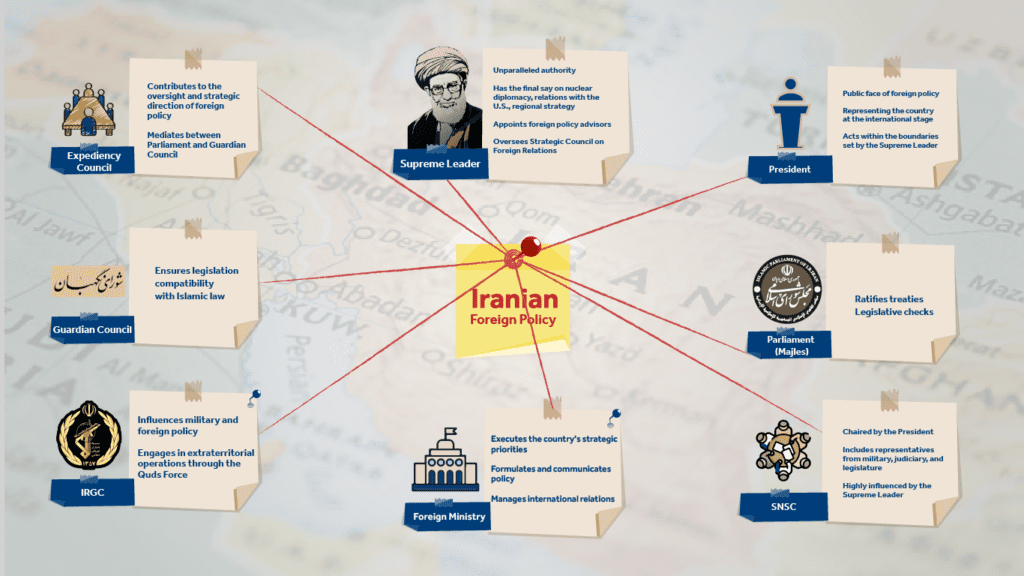
A Foreign Policy Structure in Transition
Iran’s foreign policy structure and process, as described above, have undergone significant changes in the last three years. These changes can be categorized into four main types: legal, institutional, functional, and personal changes.
The first type of change, legal, refers to the formal modification of the legal frameworks and institutional arrangements of Iran’s foreign policymaking. The clearest example of this trend is Iran’s new “development plan,” ratified by the parliament in January 2024.8 The draft bill exempted several state institutions, including the armed forces, the Ministry of Intelligence, and the Atomic Energy Organization of Iran (AEOI), from coordinating with the MFA on their foreign activities. Following backlash from experts, former diplomats, and the foreign ministry’s lobbying, the Guardian Council asked parliament to modify the law so that the intelligence ministry and the AEOI are still required to coordinate with the foreign ministry. However, the armed forces remain exempt.9
The new development plan effectively undermines the authority and role of the MFA. The law also increased fragmentation and confusion in Iran’s foreign policymaking, as different institutions pursue their own agendas and interests without proper oversight and coordination. As Mohammad Javad Zarif, Iran’s former foreign minister, under Hassan Rouhani’s administration, puts it, “every ministry [in Iran] has its own ministry of foreign affairs.”10 He also contended that “the country has two foreign policies: one that belongs to the foreign ministry and another that belongs to the armed forces.”11
The second type of change, institutional, refers to the alteration of institutional roles and procedures in Iran’s foreign policymaking and implementation. The evolving role of the SNSC exemplifies this change. Historically a consensus-builder in security and foreign policymaking, the SNSC has increasingly taken direct control of crucial strategic files, including relations with neighboring countries and Russia. After nearly a decade, the SNSC has also reassumed its position as the primary actor in nuclear diplomacy. Initially, during the nuclear negotiations with the West between 2003 and 2013, the secretary of the SNSC was Iran’s chief nuclear negotiator.12 However, under former President Hassan Rouhani, the nuclear portfolio was transferred to the administration, with Zarif leading efforts.13
The SNSC’s overall role in the foreign policymaking process was enhanced once again during Rouhani’s last two years in office, between 2020 and 2021, i.e., after the U.S.’ 2018 withdrawal from the JCPOA. Informal reports suggested that the foreign ministry was sidelined in the negotiations to revive the JCPOA that started after Joe Biden’s election as U.S. president. During the negotiations, Iran’s team reported directly to the SNSC, bypassing the foreign ministry. The SNSC’s role continued under President Raisi, with former SNSC secretary Ali Shamkhani playing a key role in the March 2023 Iran-Saudi détente agreement.14 Shamkhani was later replaced by Ali Akbar Ahmadian, a former top-ranking IRGC commander, but the SNSC remained equally active in various foreign policy files, from relations with Russia to Iran’s regional policy.15 Since his appointment, Ahmadian frequently visits Russia to engage in bilateral talks with Russian officials, as well as to participate in security discussions within the frameworks of the Shanghai Cooperation Organization (SCO) and the BRICS.16 Through these interactions, the SNSC appears to be shaping and implementing the security pillar of Iran’s revitalized Look East strategy. The SNSC’s proactive engagement is also evident in its security dialogues with Armenia and Iraq.17
The third type of change, functional, refers to the modification of norms and practices in Iran’s foreign policymaking that affect the role and function of various state institutions. One example of this change, often referred to in the past three years as the dichotomy of “battlefield vs. diplomacy,” effectively means transforming the foreign policy apparatus into a mere agent of the IRGC and its regional strategy.18 Prior to the formal introduction of this concept, Zarif voiced concern over the IRGC’s increasing influence on shaping foreign policy. In a leaked audio, Zarif expressed that the battlefield, i.e., the IRGC, often intervened and sabotaged his diplomatic efforts.19 However, the shift became more pronounced and institutionalized under the Raisi administration.
The late foreign minister, Hossein Amirabdollahian, was closely connected to the IRGC’s Quds Force.20 He publicly praised what he described as harmony between diplomacy and the battlefield and vowed to continue the IRGC-favored regional policy of supporting the Axis of Resistance and countering the United States and Israel.21 However, what Amirabdollahian, and other members of Raisi’s cabinet, described as harmony and coordination effectively signaled that diplomacy, represented by the MFA, became subordinate to the IRGC. This shift was starkly evident following Iran’s retaliatory missile and drone attack on Israel on April 13, 2024. In a breach of diplomatic protocol, the Swiss ambassador to Tehran was summoned by the IRGC, not the MFA, to convey a message to the United States.22
The fourth type of change, personal, refers to the dismissal or replacement of influential individuals and key figures in Iran’s foreign policy. One example of this change is the dismissal of Ali Shamkhani and Ali Larijani, two prominent figures who played important roles in Iran’s foreign relations under previous administrations.23 Shamkhani was the secretary of the SNSC, between 2013 and 2023, serving under Rouhani, and Raisi’s first two years, and was instrumental to facilitating JCPOA negotiations and Tehran’s dialogue with Saudi Arabia. Larijani was the speaker of the parliament for 12 years, between 2008 and 2020, under both Ahmadinejad and Rouhani and, as a special envoy of the supreme leader, had a crucial role in concluding the strategic 25 year cooperation agreement with China in 2021.24 This change is specifically influenced by a political system preparing for a looming post-Khamenei transition, necessitating the removal of independent figures who could disrupt the IRGC’s long-term plans.25 It also reflects the marginalization of pragmatic and moderate voices in the system and the centralization of power in the hands of the conservative/hardline factions.
Implications for Iran’s Foreign Relations
The changes in Iran’s foreign policy structure and process have significant implications for Iran’s foreign relations on both the global and regional levels. These implications can be analyzed in relation to four main trends that have dominated Iranian politics in the past three years.
The first trend, the centralization of power, signifies the increasing dominance of hardline/conservative factions across all branches and institutions of government. Critics in Iran have labeled this process “purification,” indicating its goal to remove opposing voices from the scene.26 This trend has made foreign policy decisions more consensual and less contested within the system. Though individual and institutional viewpoints may vary, they do not sabotage one another’s work, as they are united by a common ideological and strategic vision. This was notably evident in the case of the rapprochement with Saudi Arabia. During his presidency, Rouhani exerted considerable efforts to enhance relations with Saudi Arabia and other Arab neighbors. However, his initiatives failed to gain traction, largely due to internal opposition from hardline rivals.27 Conversely, the Raisi administration’s diplomatic endeavors in the region received support from both the supreme leader and the IRGC, leading to more meaningful changes in Iran’s relations with its neighbors.
The second trend, growing anti-Westernism, characterizes an ideological approach that is overtly anti-American and views the West, particularly the United States, as declining powers, thus negating the need to improve relations with Western states.28 Instead, priority is placed on bolstering relations with Eastern powers, notably Russia and China. The Rouhani administration favored maintaining ties with the West and aimed to preserve and revive the JCPOA as a gateway to economic and political normalization with Europe and, potentially, the United States. However, foreign policy has since pivoted eastward, with Iran abandoning hope in the JCPOA and adopting a more defiant stance towards the West.29
This shift, influenced by events like the U.S. withdrawal from the JCPOA and the “maximum pressure” campaign, also reflects a strategic recalibration within Iran’s foreign policy establishment. Rouhani and Zarif favored engaging with the West to alleviate pressures while simultaneously seeking alternatives in the East. However, the current consensus in the Iranian government champions resistance as the optimal response to Western pressures. It now focuses on strengthening ties with non-state allies and engages with regional and global powers aligned with Tehran’s revisionist ambitions.30
The third trend, militarization, is a consequence of the IRGC’s growing influence on Iran’s politics, leading to increasingly radical regional and global policies. Examples include using missile strikes for diplomatic messaging, as seen in strikes against the Kurdistan Region of Iraq and Pakistan in January 2024, and intensifying support for partners under the Axis of Resistance.31 While aimed at enhancing deterrence and developing leverage against rivals, these actions risk escalating tensions and conflicts, potentially resulting in further sanctions, isolation, and retaliation from the international community.
The fourth trend, authoritarianism, partly relates to the centralization of power, but it also encompasses increased repression of civil society and restriction of social and political activism. This trend has facilitated closer relations with similar states, notably Russia and China, which support Iran’s efforts to control cyberspace and engage in intelligence and cyber cooperation.32 These relationships are strategic, not only for geopolitical reasons, but also because they enable Iran to shield itself from internal and external threats facilitated by the internet and social media. Unlike Western powers, human rights and democracy do not factor into Russian and Chinese policies towards Iran, allowing Tehran to withstand international pressure over its human rights record, especially following the suppression of public protests in 2022.
Conclusion
The presidency of Ebrahim Raisi marked a significant shift in the structures governing foreign policy formulation and execution, featuring a complex mix of internal and external dynamics, strategic reorientations, and a potential transformation.
At the heart of these changes is a strategic recalibration towards increased centralization, anti-Westernism, militarization, and a more pronounced authoritarian grip within Iran’s ruling elite. This recalibration has manifested through four main types of changes: legal, institutional, functional, and personal, each contributing to a redefined foreign policy approach that is less about diplomatic engagement with the West and more oriented towards strengthening ties with Eastern powers and regional actors through a blend of ideological defiance and strategic pragmatism.
The diminishing influence of the MFA and the elevated role of the SNSC and IRGC signify a departure from conventional diplomatic channels to more militarized and security-driven foreign policy strategies. This shift is not merely an internal adjustment but reflects a broader ideological and strategic stance that prioritizes resistance over engagement, sovereignty over compromise, and regional influence over global integration. The new development plan, the marginalization of moderate voices, and the entrenchment of hardline stances underscore a foreign policy that is becoming increasingly insular, confrontational, and aligned with non-Western powers. At the same time, these developments indicate that a change in the president and administration will not lead to any significant shift or reorientation in foreign policy. The supreme leader’s role in determining the country’s strategic priorities remains intact, supported by the IRGC’s strong influence over Iran’s foreign and domestic politics. Furthermore, the significance of the upcoming post-Khamenei transition suggests that the next president after Raisi will likely be another insider who will not challenge or alter the established procedures of recent years.
As a result, Iran’s foreign policy is likely to continue its current trajectory, with an emphasis on strengthening alliances with Eastern powers and asserting its regional influence through a combination of military presence and diplomatic initiatives aimed at forging a counter-bloc to Western influence. This approach, while potentially offering short-term gains in terms of strategic positioning and diplomatic openings vis-à-vis neighbors, may pose long-term challenges to Iran’s international standing and relations with the international community.
In any case, the implications of the recent shifts will undoubtedly shape Iran’s foreign relations in the years to come. On one hand, the reconfiguration of Iran’s foreign policy structure offers opportunities for augmented cooperation with regional actors, rooted in a more unified and consensual approach to foreign relations that transcends previous factional divides. This newfound consensus within the ruling elite could pave the way for more coherent and strategic regional relationships, contingent on the evolving dynamics of both global and regional arenas. Nonetheless, these opportunities are contrasted with significant challenges arising from the potential reactions to Iran’s increasingly militarized and diplomatically unbalanced foreign policy. As such, this direction may even risk reversing the achievements of Iran’s regional diplomacy and its improving relations with Arab neighbors.
